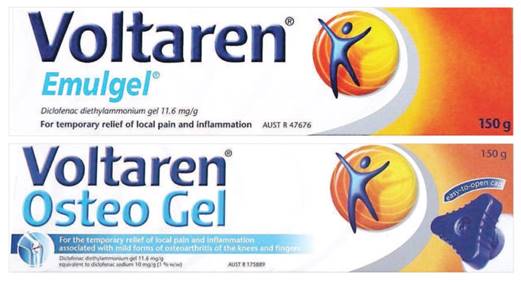
In 2010, the marketing department of Novartis had a brilliant idea:
Why not repackage Voltaren Emulgel, which is used for treating general inflammation and pain of traumatic or rheumatic origin, as a speciality osteoarthritis treatment? And why not call it Voltaren Osteo Gel and put on the label that it is good for mild forms of osteoarthritis of the knees and fingers, and charge a little more for it?
So, Voltaren Osteo Gel was created - with the same formula as Voltaren Emulgel but with different packaging designed to appeal to “those with more years behind them but still “forever young” who suffer from pain associated with osteoarthritis”.
On the other hand, Voltaren Emulgel dropped references to osteoarthritis and was marketed to an entirely different group - "the young (or young-at-heart) “weekend warriors” with sports injuries or strains want[ing] pain relief".
This is differential marketing. It resulted in increased sales, and worked beautifully until ... the ACCC, the 'national consumer champion', took an interest and took Novartis and GlaxcoSmithKline (GSK) to the Federal Court, arguing that to sell the same product in different packaging was misleading and deceptive contrary to the Australian Consumer Law.
GSK admitted that the packaging was misleading, and so it added the words “Same effective formula as Voltaren Emulgel” on the Voltaren Osteo Gel packaging (see image). This addition was enough to no longer make it misleading, according to the Federal Court.
After it went to Court, GSK did what it might have done earlier to solve the problem by bringing out a new version - Osteo Gel 12 Hourly – with twice the concentration of the active ingredient. The different formulation means it complies with the Australian Consumer Law.
The 'take out' is that packaging the one product in two ways is possible, but the packaging must make clear that it is the same product. Otherwise, the product needs to be changed.
